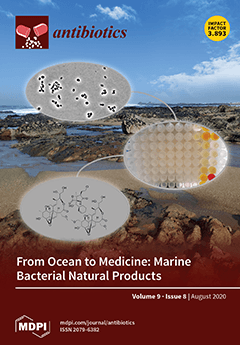Background: Carbapenem resistant
Klebsiella pneumoniae (CRKP),
Pseudomonas aeruginosa (CRPA), and
Acinetobacter baumannii (CRAB) pose significant threats to public health. However, the clinical and economic impacts of CRKP, CRPA, and CRAB remain largely uninvestigated in China. This study aimed to examine the clinical and economic burden of CRKP, CRPA, and CRAB compared with carbapenem susceptible cases in China.
Method: We conducted a retrospective and multicenter study among inpatients hospitalized at four tertiary hospitals between 2013 and 2015 who had
K. pneumoniae,
P. aeruginosa, and
A. baumannii positive clinical samples. Propensity score matching (PSM) was used to balance the impact of potential confounding variables, including age, sex, insurance, number of diagnosis, comorbidities (disease diagnosis, and Charlson comorbidity index), admission to intensive care unit, and surgeries. The main indicators included economic costs, length of stay (LOS), and mortality rate.
Results: We included 12,022 inpatients infected or colonized with
K. pneumoniae,
P. aeruginosa, and
A. baumannii between 2013 and 2015, including 831 with CRKP and 4328 with carbapenem susceptible
K. pneumoniae (CSKP), 1244 with CRPA and 2674 with carbapenem susceptible
P. aeruginosa (CSPA), 1665 with CRAB and 1280 with carbapenem susceptible
A. baumannii (CSAB). After PSM, 822 pairs, 1155 pairs, and 682 pairs, respectively were generated. Compared with carbapenem-susceptible cases, those with CRKP, CRPA, and CRAB were associated with statistically significantly increased total hospital cost ($14,252,
p < 0.0001; $4605,
p < 0.0001; $7277,
p < 0.0001) and excess LOS (13.2 days,
p < 0.0001; 5.4 days,
p = 0.0003; 15.8 days,
p = 0.0004). In addition, there were statistically significantly differences in hospital mortality rate between CRKP and CSKP, and CRAB and CSAB group (2.94%,
p = 0.024; 4.03%,
p = 0.03); however, the difference between CRPA and CSPA group was marginal significant (2.03%,
p = 0.052).
Conclusion: It highlights the clinical and economic impact of CRKP, CRPA, and CRAB to justify more resources for implementing antibiotic stewardship practices to improve clinical outcomes and to reduce economic costs.
Full article






